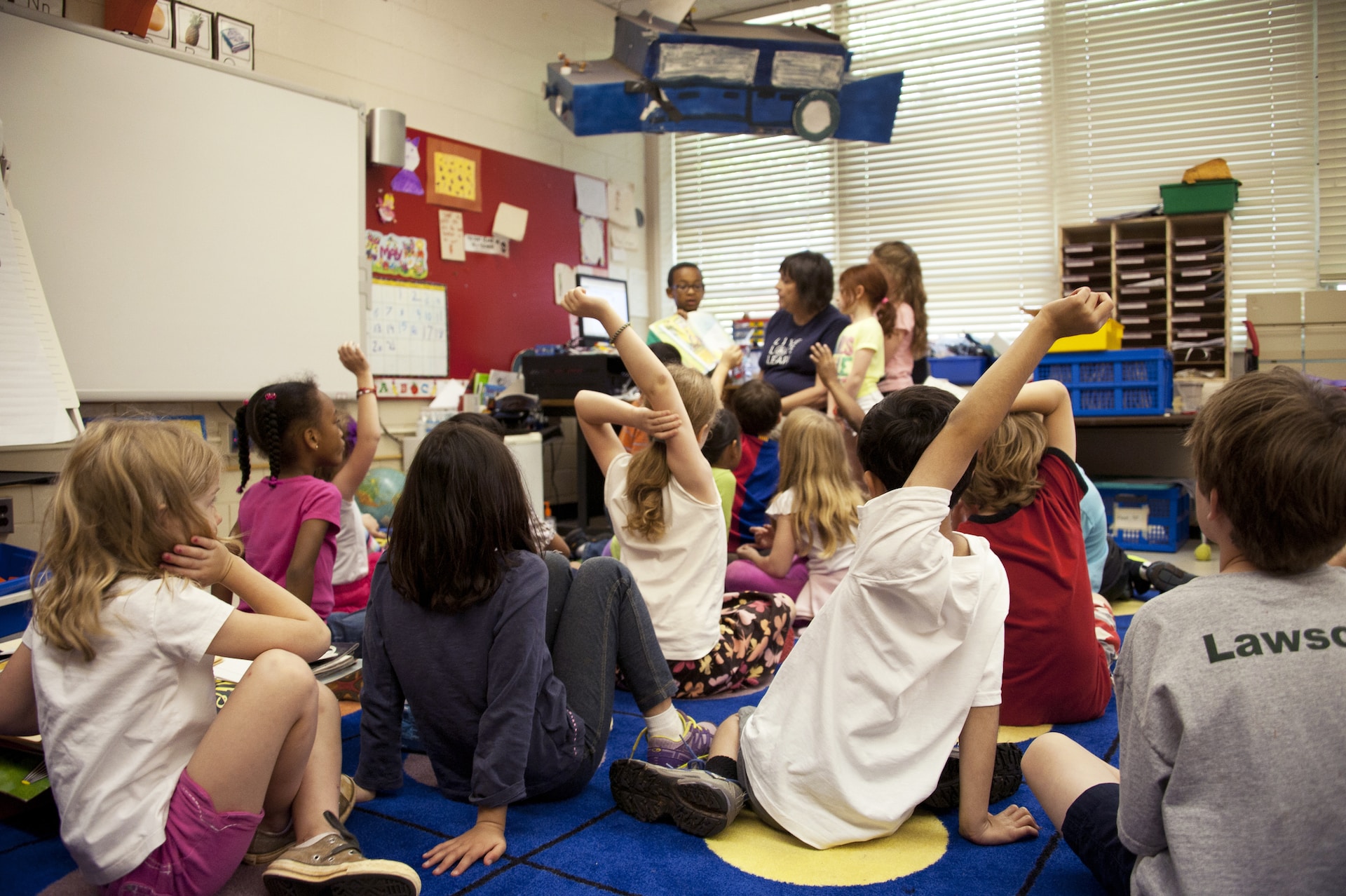Behaviorism in Education: How to Foster Positive Learning Environments

Table of Contents
Harnessing Behaviorism: Strategies for Enhancing Classroom Engagement and Student Success
In the realm of education, creating a positive learning environment plays a vital role in fostering effective teaching and promoting student success. One approach that has garnered attention is behaviorism, a psychological theory that emphasizes the impact of external stimuli on behavior and learning outcomes. In this article, we will explore how behaviorism can be applied in educational settings to nurture a positive and engaging classroom atmosphere.
By understanding how students respond to various stimuli, teachers can craft strategies to encourage positive behaviors, motivate active participation, and enhance overall learning experiences. From implementing behavior modification techniques to employing positive reinforcement methods, behaviorism offers a wealth of practical insights that can positively influence student engagement, productivity, and even emotional well-being.
Drawing on research and best practices, we will delve into the key principles of behaviorism and provide practical tips for educators to create a setting that promotes positive behavior, academic growth, and student success. Whether you are a seasoned educator or a student preparing to enter the field of teaching, this article will equip you with valuable tools and strategies to foster a positive learning environment that brings out the best in your students.
Understanding behaviorism in the context of learning
Behaviorism , as a psychological theory, posits that behavior is shaped by the environment and the external stimuli individuals are exposed to. In the context of education, behaviorism focuses on how teachers can use these external stimuli to influence and shape student behavior in the classroom. This approach views learning as a process of conditioning, where students respond to specific stimuli and their behavior is reinforced or modified accordingly.
According to behaviorism, students are more likely to engage in positive behaviors when they are rewarded or reinforced for their actions. This can be achieved through various techniques, such as providing praise, offering incentives, or utilizing tangible rewards. By understanding the principles of behaviorism, educators can create a classroom that promotes positive behavior and encourages students to actively participate in their own learning.
Behaviorism also emphasizes the importance of consistency and predictability in learning. When students know what to expect and how their behavior will be evaluated, they feel more secure and are more likely to exhibit positive behaviors. By setting clear expectations, establishing routines, and providing consistent feedback, teachers can create a sense of structure that supports student learning and fosters a positive classroom atmosphere.
The impact of positive learning environments on student behavior
Research has shown that positive learning environments have a significant impact on student behavior and academic outcomes. When students feel safe, supported, and valued in their learning, they are more likely to engage in positive behaviors and actively participate in the learning process.
A positive learning environment promotes a sense of belonging and community among students. When students feel connected to their peers and teachers, they are more motivated to behave in ways that contribute to a harmonious classroom atmosphere. This sense of belonging also enhances students’ emotional well-being, reducing the likelihood of behavioral issues and promoting a positive attitude towards learning.

In positive learning contexts, teachers create opportunities for students to collaborate, problem-solve, and engage in meaningful discussions. This promotes active learning and encourages students to take ownership of their education. By fostering a sense of autonomy and empowerment, students are more likely to exhibit positive behaviors, such as active listening, respectful communication, and active participation.
A study published in the International Journal of Teaching and Education states:
The classroom environment is critical to the overall success for students. The behavior of some students has remained at implementation levels, while others regressed. This could be a result of students adjusting to the program or students need for external motivation to perform better. However, after the implementation of PBIS within my classroom and evaluating the impacts, I believe that the classroom environment is essential to learning for all.
Bernard Charles et al. (2019). Source.
| Key Point | Observation |
| Positive Behavior Patterns | Leads to a better classroom environment |
| Disruptive Behaviors | Causes students to lose focus |
| Low-Performing Students | Showed improvement |
| High-Performing Students | Remained near constant |
| Positive Behavior and Academic Outcomes | Directly correlated; growth in one leads to growth in the other |
Strategies for creating a positive learning environment
Creating a positive learning environment requires intentional planning and implementation of strategies that promote positive behavior. Here are some practical tips for educators to create a classroom atmosphere that fosters positive behavior, academic growth, and student success:
- Build positive relationships: Take the time to get to know your students. Show genuine interest in their lives, and make an effort to establish a supportive and trusting relationship. When students feel valued and understood, they are more likely to exhibit positive behaviors.
- Set clear expectations: Clearly communicate your expectations regarding behavior, academic performance, and classroom rules. Ensure that students understand the consequences of their actions and the rewards of positive behavior. Consistently reinforce these expectations to create a sense of structure and predictability.
- Create a safe and inclusive setting: Foster a classroom where all students feel safe, respected, and included. Address any incidents of bullying or discrimination promptly and create opportunities for students to share their thoughts and feelings in a supportive setting. Encourage empathy and understanding among students to promote a positive and inclusive atmosphere.
- Use positive reinforcement: Acknowledge and celebrate student achievements and positive behaviors. Provide verbal praise, stickers, or other tangible rewards to reinforce desired behaviors. When students receive positive feedback, they are more motivated to continue exhibiting those behaviors.
- Utilize behavior modification techniques: Behavior modification techniques, such as token economies or behavior contracts, can be effective tools for shaping positive behavior. These techniques involve setting specific goals, tracking progress, and providing rewards as students meet those goals. By breaking down desired behaviors into manageable steps and providing reinforcement along the way, teachers can help students develop positive habits.
Behavior management techniques for teachers
Behavior management is an essential aspect of creating a positive learning environment. Here are some effective behavior management techniques that teachers can use to foster positive behavior in the classroom:
- Positive reinforcement: Rewarding desired behaviors with praise, incentives, or privileges can motivate students to continue exhibiting those behaviors. For example, offering extra free time, assigning leadership roles, or providing small rewards like stickers or certificates can reinforce positive actions.
- Classroom rules and routines: Establish clear and concise rules that outline expected behaviors in the classroom. Communicate these rules to students and consistently enforce them. Additionally, establish routines for daily activities, transitions, and procedures, as they provide structure and predictability.
- Redirecting negative behaviors: Instead of focusing solely on discipline, teachers can redirect negative behaviors by providing alternative choices or activities. For example, if a student is disruptive during independent work time, the teacher can offer the option to work in a designated quiet area or provide a fidget toy to help the student focus.
- Effective communication: Open and effective communication between teachers and students is crucial for managing behavior. Listening to students’ concerns, addressing their needs, and providing constructive feedback can help prevent and resolve behavioral issues.
- Collaboration with parents and guardians: Maintaining regular communication with parents or guardians is essential for behavior management. Sharing information about behavior expectations, progress, and strategies used in the classroom can help create a consistent approach between home and school.
Implementing behaviorism in the classroom
To effectively implement behaviorism in the classroom, teachers can consider the following strategies:
- Identify target behaviors: Determine the specific behaviors you want to reinforce or modify. Whether it’s active listening, completing assignments on time, or following instructions, clearly define the behaviors you want to encourage.
- Establish a reinforcement system: Design a reinforcement system that rewards students for exhibiting the target behaviors. This can include verbal praise, tokens, or privileges. Make sure the reinforcement system is clear, consistent, and aligned with the desired behaviors.
- Track progress: Keep a record of each student’s progress towards meeting the desired behaviors. This can be done through a behavior chart or a point system. Regularly review and provide feedback to students to keep them motivated.
- Involve students in goal-setting: Engage students in the process by allowing them to set their own goals. This fosters a sense of ownership and motivates students to work towards their individual targets.
- Monitor and adjust: Regularly monitor the effectiveness of the behavior modification techniques and make adjustments as needed. If certain strategies are not producing the desired results, explore alternative approaches and adapt accordingly.
By implementing behaviorism in the classroom, teachers can create an environment that promotes positive behavior, enhances student engagement, and supports academic growth.
Case studies: successful use of behaviorism in education
To better understand the practical application of behaviorism in education, let’s explore two case studies where behaviorism has been successfully utilized:
Case study 1: Classroom management: Ms. Rodriguez, a 5th-grade teacher, implemented a behavior management system based on behaviorism principles. She established clear expectations, rewarded positive behavior with tokens, and allowed students to redeem their tokens for various privileges. The system helped create a positive classroom atmosphere, with students actively engaging in their learning and demonstrating improved behavior.
Case study 2: Academic performance: Mr. Kim, a high school math teacher, used behavior modification techniques to improve student academic performance. He set specific goals for each student and provided rewards as they met those goals. By breaking down complex concepts into smaller tasks and reinforcing student progress, Mr. Patel saw significant improvements in student understanding and performance.
These case studies highlight the effectiveness of behaviorism in education and its potential to positively impact student behavior and academic outcomes.
Challenges and limitations of behaviorism in education
While behaviorism offers valuable insights and strategies, it is essential to acknowledge its limitations and potential challenges in educational settings:
- Individual differences: Students have unique learning styles, abilities, and background experiences. What may be reinforcing for one student may not be effective for another. Teachers need to consider individual differences and tailor behaviorism strategies accordingly.
- Overemphasis on external rewards: Behaviorism heavily relies on external rewards and reinforcement. Overemphasis on tangible rewards may undermine intrinsic motivation and hinder students’ ability to develop a genuine love for learning.
- Contextual factors: Classroom dynamics, cultural influences, and socioeconomic factors can impact the effectiveness of behaviorism strategies. Teachers need to consider these contextual factors and adapt their approach accordingly.
- Ethical considerations: Critics argue that behaviorism places too much emphasis on controlling and manipulating student behavior, disregarding their autonomy and individuality. Educators need to strike a balance between behavior management and fostering student agency.
Educators must be aware of these challenges and limitations when implementing behaviorism in education to ensure its effective and ethical application.
Integrating behaviorism with other educational approaches
While behaviorism provides valuable insights into behavior management and learning, it is essential to integrate it with other educational approaches for a comprehensive and holistic approach to teaching. Here are some educational approaches that can be combined with behaviorism:
- Cognitive psychology: Incorporating cognitive psychology principles can help teachers understand how students process information, think critically, and solve problems. By combining behaviorism with cognitive psychology, educators can create learning experiences that promote both behavior change and cognitive growth.
- Humanistic education: Humanistic education emphasizes the importance of students’ emotional well-being, self-esteem, and personal growth. By incorporating humanistic principles into behaviorism practices, teachers can create a nurturing and supportive environment that addresses the holistic needs of students.
- Social-emotional learning: Social-emotional learning focuses on developing students’ social skills, emotional intelligence, and self-awareness. By integrating behaviorism with social-emotional learning, teachers can help students develop positive behaviors while simultaneously fostering their social and emotional well-being.
By combining behaviorism with other educational approaches, teachers can create a balanced and comprehensive approach that addresses the diverse needs of students and promotes holistic development.
Conclusion: the importance of fostering positive learning environments through behaviorism
Creating a positive learning environment is crucial for nurturing student success and engagement. Behaviorism provides valuable insights and strategies for educators to shape positive behavior, motivate active participation, and enhance overall learning experiences. By understanding the principles of behaviorism and implementing effective behavior management techniques, teachers can foster a positive classroom atmosphere that supports student growth and achievement.
However, it is essential to consider the limitations and challenges of behaviorism and integrate it with other educational approaches for a comprehensive and student-centered approach. By combining behaviorism with cognitive psychology, humanistic education, and social-emotional learning, educators can create a learning environment that promotes positive behavior, academic growth, and student well-being.
As educators, we have the power to shape not only academic outcomes but also the overall learning experiences of our students. By embracing behaviorism and applying its principles in a thoughtful and ethical manner, we can create positive learning environments that empower students to reach their full potential and become lifelong learners.












